CCR5 is a suppressor for cortical plasticity and hippocampal learning and memory
- PMID: 27996938
- PMCID: PMC5213777
- DOI: 10.7554/eLife.20985
CCR5 is a suppressor for cortical plasticity and hippocampal learning and memory
Abstract
Although the role of CCR5 in immunity and in HIV infection has been studied widely, its role in neuronal plasticity, learning and memory is not understood. Here, we report that decreasing the function of CCR5 increases MAPK/CREB signaling, long-term potentiation (LTP), and hippocampus-dependent memory in mice, while neuronal CCR5 overexpression caused memory deficits. Decreasing CCR5 function in mouse barrel cortex also resulted in enhanced spike timing dependent plasticity and consequently, dramatically accelerated experience-dependent plasticity. These results suggest that CCR5 is a powerful suppressor for plasticity and memory, and CCR5 over-activation by viral proteins may contribute to HIV-associated cognitive deficits. Consistent with this hypothesis, the HIV V3 peptide caused LTP, signaling and memory deficits that were prevented by Ccr5 knockout or knockdown. Overall, our results demonstrate that CCR5 plays an important role in neuroplasticity, learning and memory, and indicate that CCR5 has a role in the cognitive deficits caused by HIV.
Keywords: CCR5; HIV-associated cognitive deficits; barrel cortex; gp120; hippocampus; learning and memory; mouse; neuroscience.
Conflict of interest statement
The authors declare that no competing interests exist.
Figures
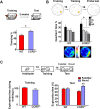
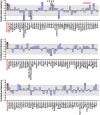
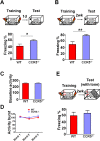


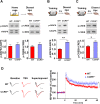
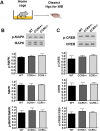
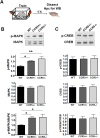
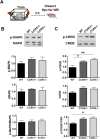
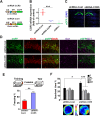


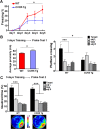
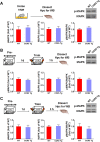
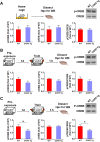
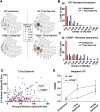

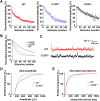


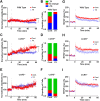
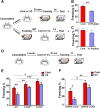




Similar articles
-
CCR5 regulates Aβ1-42-induced learning and memory deficits in mice.Neurobiol Learn Mem. 2024 Feb;208:107890. doi: 10.1016/j.nlm.2024.107890. Epub 2024 Jan 11. Neurobiol Learn Mem. 2024. PMID: 38215963
-
Memory-Related Synaptic Plasticity Is Sexually Dimorphic in Rodent Hippocampus.J Neurosci. 2018 Sep 12;38(37):7935-7951. doi: 10.1523/JNEUROSCI.0801-18.2018. Epub 2018 Aug 1. J Neurosci. 2018. PMID: 30209204 Free PMC article.
-
Neuron-Derived Estrogen Regulates Synaptic Plasticity and Memory.J Neurosci. 2019 Apr 10;39(15):2792-2809. doi: 10.1523/JNEUROSCI.1970-18.2019. Epub 2019 Feb 6. J Neurosci. 2019. PMID: 30728170 Free PMC article.
-
Insight into the roles of CCR5 in learning and memory in normal and disordered states.Brain Behav Immun. 2021 Feb;92:1-9. doi: 10.1016/j.bbi.2020.11.037. Epub 2020 Dec 1. Brain Behav Immun. 2021. PMID: 33276089 Review.
-
Plasticity, hippocampal place cells, and cognitive maps.Arch Neurol. 2001 Jun;58(6):874-81. doi: 10.1001/archneur.58.6.874. Arch Neurol. 2001. PMID: 11405801 Review.
Cited by
-
Activity-dependent transcriptional programs in memory regulate motor recovery after stroke.Commun Biol. 2024 Aug 25;7(1):1048. doi: 10.1038/s42003-024-06723-3. Commun Biol. 2024. PMID: 39183218 Free PMC article.
-
Modulating neuroinflammation and cognitive function in postoperative cognitive dysfunction via CCR5-GPCRs-Ras-MAPK pathway targeting with microglial EVs.CNS Neurosci Ther. 2024 Aug;30(8):e14924. doi: 10.1111/cns.14924. CNS Neurosci Ther. 2024. PMID: 39143678 Free PMC article.
-
Blocking CCR5 activity by maraviroc augmentation in post-stroke depression: a proof-of-concept clinical trial.BMC Neurol. 2024 Jun 6;24(1):190. doi: 10.1186/s12883-024-03683-3. BMC Neurol. 2024. PMID: 38844862 Free PMC article. Clinical Trial.
-
Molecular Role of HIV-1 Human Receptors (CCL5-CCR5 Axis) in neuroAIDS: A Systematic Review.Microorganisms. 2024 Apr 12;12(4):782. doi: 10.3390/microorganisms12040782. Microorganisms. 2024. PMID: 38674726 Free PMC article. Review.
-
α-Synuclein triggers cofilin pathology and dendritic spine impairment via a PrPC-CCR5 dependent pathway.Cell Death Dis. 2024 Apr 13;15(4):264. doi: 10.1038/s41419-024-06630-9. Cell Death Dis. 2024. PMID: 38615035 Free PMC article.
References
Publication types
MeSH terms
Substances
Grants and funding
LinkOut - more resources
Full Text Sources
Other Literature Sources
Medical
Molecular Biology Databases


